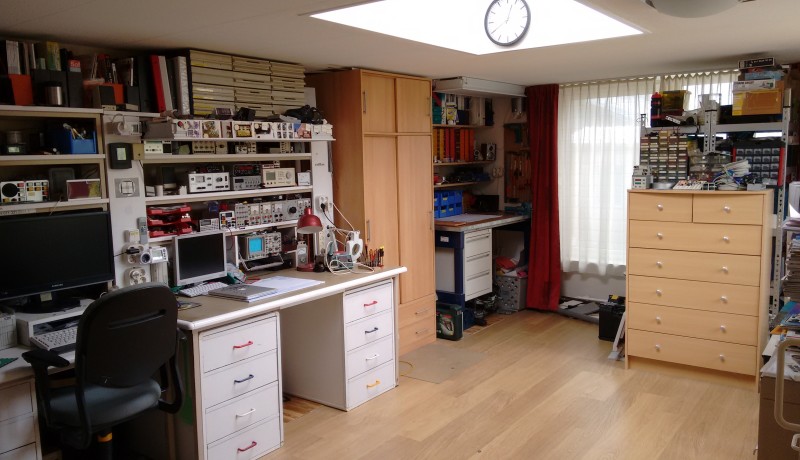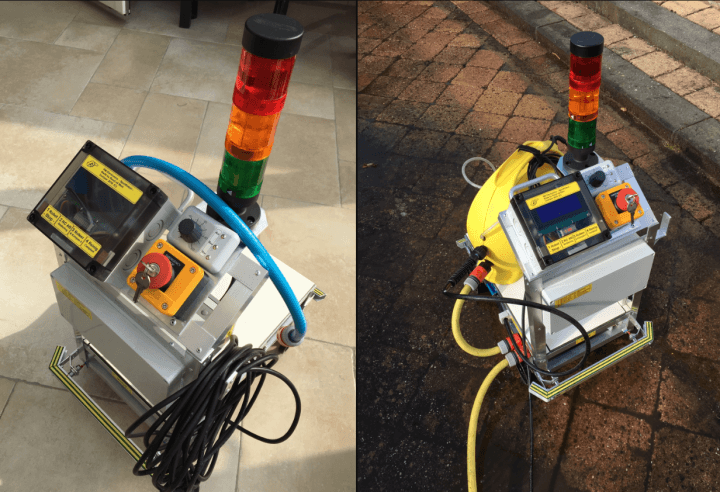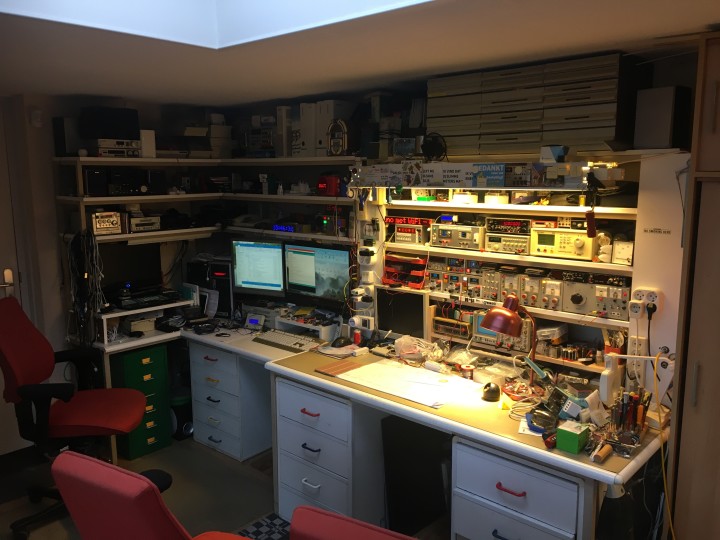A Workspace for DIY Projects and Learning Material
on

After 40 years at Siemens, Ruud van der Meer's enthusiasm for electronics remains infectious. Here he talks about his background, his interests, and his workspace for DIY electronics.
The Electronics Technician
After completing vocational school and a course of study in measurement and control technology plus advanced training as an electronics technician, Ruud started working at Siemens in the department for measurement and control equipment, measuring instruments, and calibration in 1970. In Ruud’s own words:
“There were lots of opportunities. In just a short time, I developed a number of projects, including LED displays, PI controllers and measurement transducers, and by developing test equipment and test systems I was able to improve a lot of work processes. After several years, I became a team leader, and, together with the Siemens Hobby Computer Club, I developed our own PC system called SUMO80.”
Ruud quickly noticed that some people needed a bit of help to find their way with new technologies, so he started teaching courses inside the company and at the Regional Training Center in the fields of electrical engineering and electronics, digital methods, communications technology, and mechatronics.
“At a certain point, I was looking for a new challenge, and that came along when I was asked to be the head of company vocational training at Siemens. At the time, there were approximately 60 students in the electrical engineering program. One of my tasks (along with the theoretical part of the program) was to improve the inflow of new people in the company, which had declined over the years. Among other things, I did that by expanding the training program to include electronics, PLC technology, and communications technology, as well as mechatronics in the last year, in cooperation with lecturers at TU Delft.”
The Siemens company vocational training program was shut down in 2005, so Ruud had to look for a job in another field (but still within Siemens). In the end, he found a new position in the department responsible for building automation and fire protection.
“To make a long story short, in terms of work processes, it looked like the Stone Age there, but, after a while, I managed to make the department more streamlined. And then I retired in 2016.”
It was again time for something different. Ruud has become the first energy coach of the municipality of Kaag en Braassem, and, in the meantime, has made a lot of recommendations regarding sustainability. In part due to this, he has developed many home automation systems based on Arduino.
“After a number of presentations to the Hobby Computer Club about Arduino, I was asked to do the same for the Leiderdorp Adult Education Center (LVU). That started six years ago. After that, I also taught Arduino courses at the adult education centers of Alphen aan de Rijn, Lisse, and Hillegom. Now we have collected a large group of enthusiastic people, and we organize a monthly Arduino café and, of course, the annual World Arduino Day. There is also a lot of interest in the electronics soldering course. There’s not enough DIY electronics being built now, despite the fact that it’s so easy with Arduino.”
A Workspace for DIY Electronics
Ruud has developed a lot of learning material (schematics, PCBs and software) for all of the courses and training sessions. Most of these were created in his workspace (and in the beginning also various things for Siemens). Figure 1 gives an impression of his home workspace.


“I have had my own home lab (or at least a hobby room) since 1965. What you see in the photo is the room I have been using since 2005. The PC part is on the left, the electronics and measurement part is in the middle, and the part for mechanical work is on the right. That’s where I developed my mechanical cleaning robot, for example, as a practical exercise in mechatronics (Figure 2). I have developed a lot of test and measurement equipment. Unfortunately, I no longer have my home-made tube oscilloscope, but many designs are still around and have also been built by colleagues."

"Figure 3 gives an impression. One of my recent projects is based on the existing DIY calculator from KKmoon. In my opinion, it did not have enough features in its original form, and it was difficult to reprogram. However, it is a nice hardware design, so I developed a new core for it — based on an Arduino board, of course. We are now building a number of these DIY calculators with a group of Arduino students. The calculator functionality (alongside the basic calculator function) is aimed at people who are often involved in programming or other technical activities. Figure 4 shows the outside and a glimpse of the inside.”

This Arduino Multicalculator will be discussed in more detail in one of the upcoming editions of Elektor magazine.
Editor's note: Translated by Kenneth Cox. Article 230035-01 appears in Elektor July/August 2023.


Discussion (3 comments)